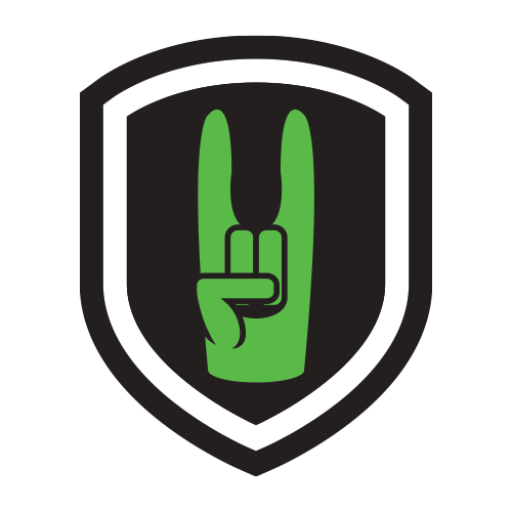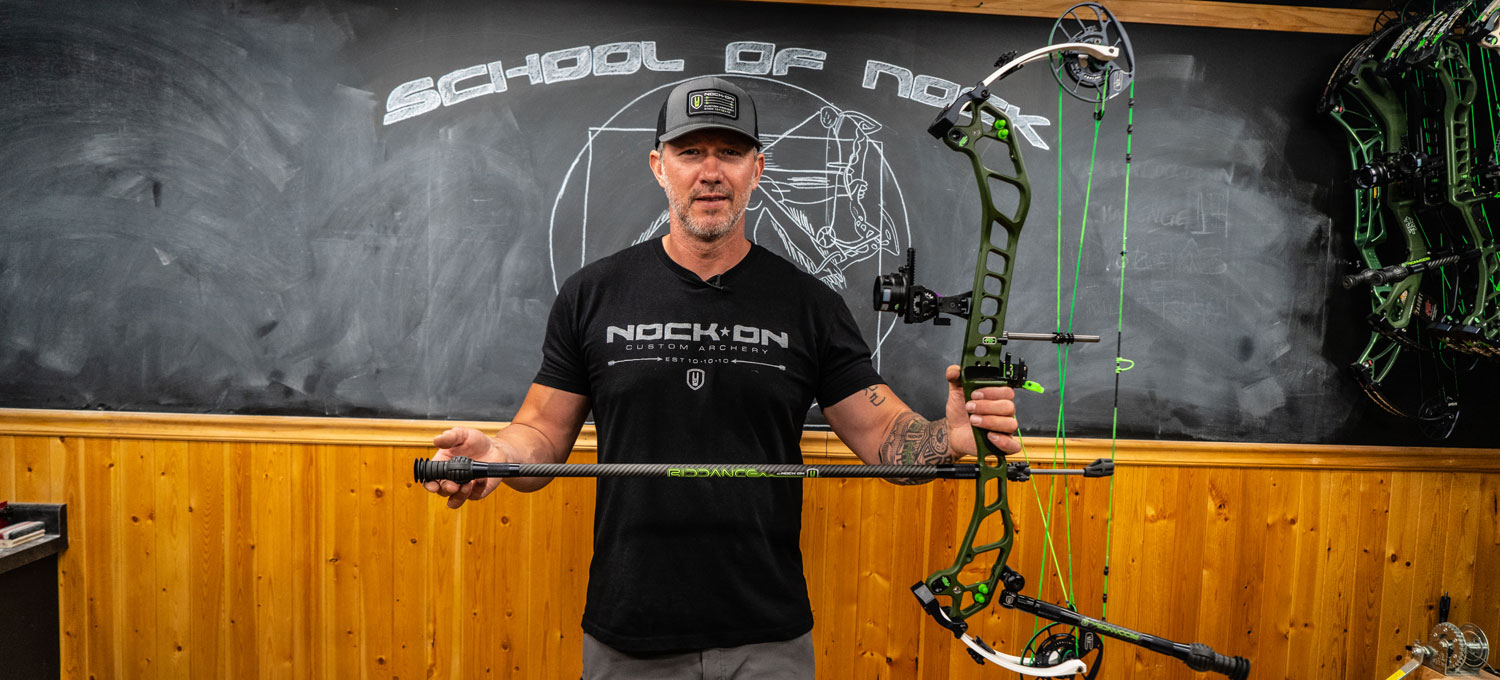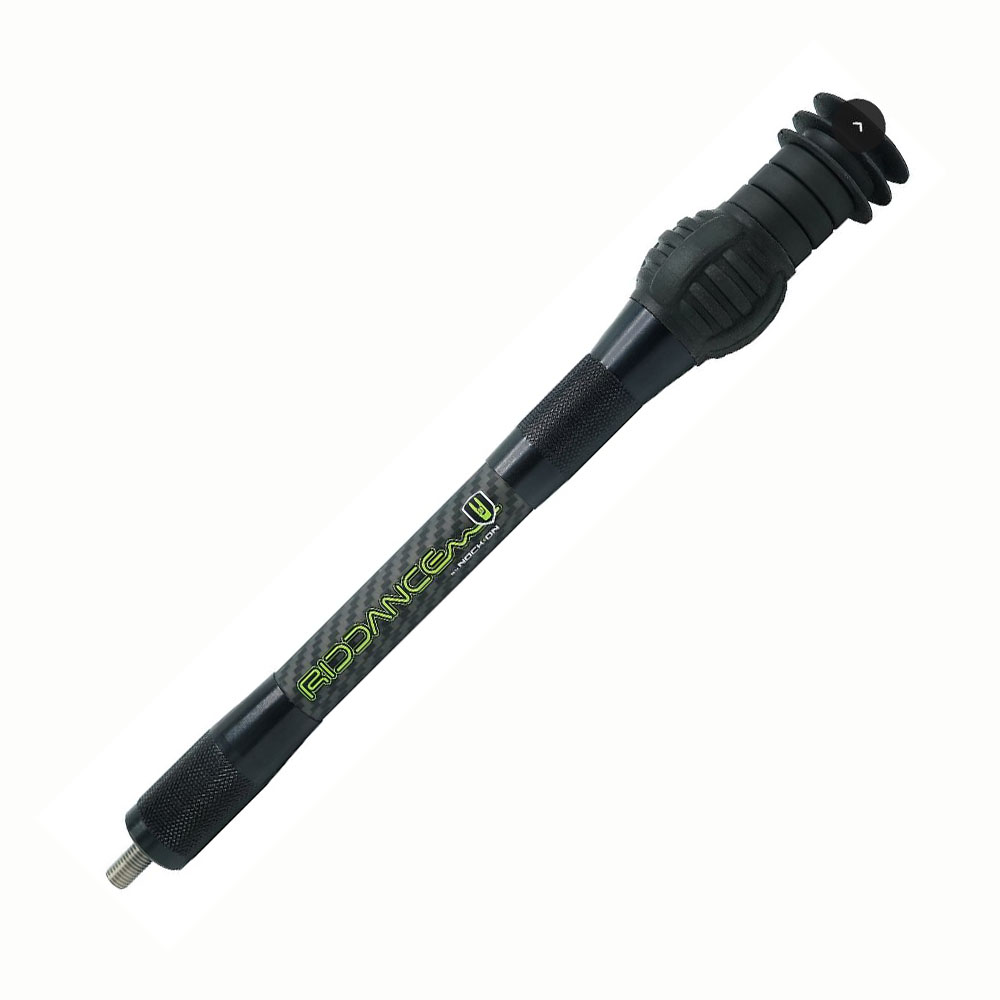Setting up a bow is a series of carefully calculated decisions, and one of the final — yet most crucial — choices is stabilization. After countless hours tuning bows for competition and hunting over the years, I’ve learned that selecting the best bow stabilizer isn’t just about what looks cool or what your buddy shoots. It’s about finding the perfect balance between reducing vibration and improving accuracy for your specific shooting style.
Many archers find themselves puzzled when it comes to stabilizers. What length do I need? How much weight should I add? Should I run a back bar? These questions aren’t just common—they’re essential to get right if you want to maximize your setup’s potential.
In this guide, I’ll break down my approach to bow stabilizer selection, including real-world considerations that will help you make educated decisions rather than just following trends. Let’s dive into the foundational principles of bow stabilization and how to find the perfect setup for your shooting style.
Understanding the Fundamentals of Bow Stabilization
When it comes to choosing the best bow stabilizer, there’s no one-size-fits-all approach. Your optimal setup depends on several critical factors:
Personal Physical Factors
- Draw weight: Higher draw weights can benefit from different stabilization than lighter setups
- Holding weight: The amount of weight you’re holding at full draw affects how your stabilizer functions
- Body size and muscle structure: Larger archers can typically handle more weight, but that doesn’t mean they should
- Shooting style: Your natural tendencies and form quirks will influence what works best
I’ve always approached stabilization with two primary goals: minimizing vibration and improving grouping. You absolutely can achieve both with the right bow stabilizer setup. What I avoid are stabilizers that require excessive strength, transmit uncomfortable vibration frequencies back through my body, or leave me with shoulder pain after a shooting session.
The Riddance Stabilizer System
Our Riddance bow stabilizer lineup gives you several options to dial in your perfect setup. For the front rod, you’ve got multiple length options, and for the side or back rods, we offer both 8-inch and 10-inch variants.
It’s important to understand how the measurements work. When we say “8-inch,” that’s the carbon rod length — not counting the suppression components and weights. With the standard configuration, you’ll add about 3 inches to that measurement. So an 8-inch rod has a total length of 11 inches, and a 10-inch rod extends to 13 inches total.
For rear stabilization, our Nock On Gripper Mount offers multiple angle adjustments and includes a quick-release system. This feature is a game-changer for hunting bow stabilizer setups, allowing you to easily remove the rear stabilizer when moving through tight spaces or climbing into a treestand.
The Hidden Benefits of Front Rod Length
During my competitive years, I gravitated toward longer front rods for good reason. Beyond the obvious stabilizing effect, longer bow stabilizers serve as excellent training tools. When you’re holding your bow at full draw, that front rod acts as a torque indicator. If you’re torquing your grip, you’ll see the end of that stabilizer moving off-center.
This visual feedback is invaluable. You can immediately see when your bow hand is applying uneven pressure, allowing you to make micro-adjustments to your form. It’s like having a built-in coach pointing out grip issues before you release.
For this particular setup I’m building — what I call my “hybrid bow” — I’m choosing a 27-inch front rod. This gives me a feel closer to my hunting setup with a quiver attached, while still providing enough length for stability and torque indication.
Finding Your Perfect Balance with the Best Bow Stabilizer
Stabilization setup is an experimental process, and I encourage you to approach it with curiosity. Here are the key variables you can manipulate:
Rear Stabilizer Adjustments
- Angle: Changing the angle affects both side-to-side and up-and-down balance
- Extension: How far the weight sits from your riser affects leverage
- Positioning: Moving it closer to or further from the string changes the feel
Front Stabilizer Considerations
- Length: Longer rods improve up-and-down stability
- Weight: More weight can increase steadiness but requires more strength
- Position of weight: Weight closer to the riser feels different than weight at the end
When experimenting, don’t just think about how steady your pin looks. Consider how your bow stabilizer configuration affects your tune. I’ve seen countless setups that look impressive but actually hurt arrow flight. Try shooting through paper with your full stabilizer setup, then again with a minimalist approach. The results might surprise you.
Best Bow Stabilizers for Hunting vs. Competition
The ideal bow stabilizer setup differs significantly between hunting and target shooting:
Hunting Stabilizer Setups
- Typically shorter front rods (8-15 inches total length)
- Lighter weight configurations
- Often detachable or quick-release designs
- Focus on vibration dampening and maneuverability
Competition Stabilizer Setups
- Longer front rods (24-33 inches)
- More overall weight
- Almost always include side/back bars for counterbalance
- Focus on stability and precision over portability
For hunters who also enjoy target shooting, a modular system that can be quickly adjusted between configurations offers the best bow stabilizer versatility.
My Personal Stabilization Philosophy
After decades of competitive shooting and hunting, I’ve developed a specific approach to bow stabilizers that works for me:
- I prefer a shorter side/back rod
- I use medium-length front rods rather than extremely long ones
- I keep my weight configuration relatively light
- I concentrate weight closer to the bow’s center mass instead of far out front
This last point is crucial. When too much weight sits far out on a front stabilizer, it forces you to compress your shoulder to hold it steady. Many archers compensate by “hitching” their hips, shifting their posture to counter the weight. While this might create a temporarily steady sight picture, it’s terrible technique that ultimately hurts accuracy.
Remember that the best bow stabilizers should enhance your natural form, not force you to adapt to them. If you’re changing your body position to accommodate your stabilization setup, you’ve gone too far.
How to Test Different Bow Stabilizer Configurations
To find your ideal setup, follow this testing process:
- Start with just a front rod of medium length
- Shoot 2-3 groups at your typical distance
- Add a back/side rod and shoot the same number of groups
- Try different weight configurations, shooting consistent groups with each
- Compare group sizes and how each configuration feels
- Pay attention to how long you can hold steady before fatigue sets in
- Make notes on each configuration to track what works best
This methodical approach will reveal which bow stabilizer setup performs best for your specific shooting style.
Finding Your Starting Point
If you’ve never used a long front rod, start with something in the middle range like a 27-inch (which gives you about 30 inches total length with end components). This gives you the benefits of a longer rod without requiring a dramatic adjustment to your shooting style.
Similarly, if you’ve only ever used very short hunting stabilizers, consider stepping up to a 13-15 inch total length front rod (our 10-inch rod plus components) before going straight to competition lengths.
Top Bow Stabilizer Recommendations for Different Needs
For Bowhunters:
The best bow stabilizer for hunting combines moderate length with effective vibration dampening. Our 8-inch Riddance stabilizer (11 inches total) offers the perfect balance of steadiness and maneuverability in tight hunting scenarios.
For 3D Shooters:
A medium-length front rod (10-15 inches) paired with a shorter back bar provides excellent balance without excess weight that causes fatigue during long tournaments.
For Target Archers:
Our 27-inch Riddance front stabilizer paired with the 10-inch back bar delivers tournament-ready performance while maintaining comfortable balance.
Frequently Asked Questions About Bow Stabilizers
How much should a good bow stabilizer weigh?
The optimal weight depends on your strength and shooting style, but most archers find success with 3-6 ounces on hunting setups and 6-12 ounces on target setups.
Do I really need a back or side stabilizer?
For hunting, no — many successful hunters use only a front rod. For target shooting, a back/side stabilizer dramatically improves left-right balance and is worth adding.
How do I know if my stabilizer is improving my shooting?
The proof is in your groups. If your groups tighten up with a particular setup, that’s the objective evidence you need.
Can the wrong stabilizer setup hurt my accuracy?
Absolutely. Too much weight or poor weight distribution can cause fatigue, form changes, and accuracy problems.
Final Thoughts on Choosing the Best Bow Stabilizer
Stabilization is personal. What works for me or any other archer might not work for you. The key is understanding the principles behind bow stabilizer design and then experimenting methodically to find what improves both your comfort and your accuracy.
For this hybrid bow build, I’ve landed on the 8-inch rear stabilizer (11 inches total) mounted fairly low and close to the bow, paired with a 27-inch front rod (about 30 inches total). This combination gives me the right balance of stability, feedback, and comfortable shooting form.
The true test, of course, comes when we take this setup to the field. That’s where we’ll find out if our bow stabilizer choices translate into the consistent, accurate arrow flight we’re looking for. Remember, the best bow stabilizer isn’t just about what the pros use—it’s about what helps you put arrows precisely where you want them, shot after shot.
Key Takeaways for Finding Your Best Bow Stabilizer:
- Match your stabilizer length and weight to your shooting style and strength
- Experiment methodically with different configurations
- Focus on both vibration reduction and improved accuracy
- Ensure your setup enhances rather than changes your natural form
- Consider a modular system if you both hunt and target shoot
Pro Tip: When testing different bow stabilizer setups, shoot at least 20-30 arrows with each configuration before making judgments. Initial impressions can be misleading—give yourself time to adapt to each setup.










 massmonopoly
massmonopoly